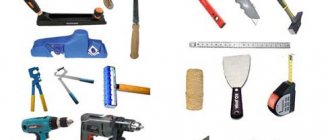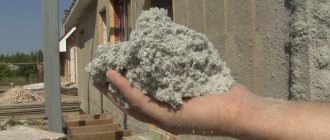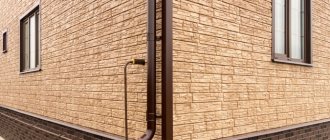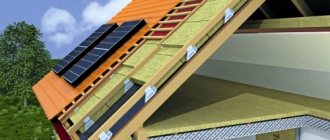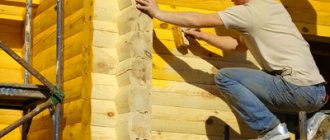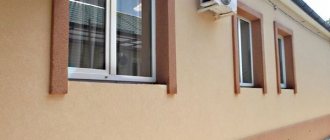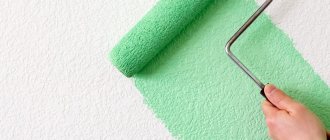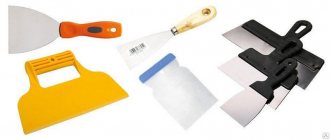We now live in a time when everything can be ordered home or bought without leaving the couch. We easily track our parcels that are rushing to us from other countries using apps, and the manicurist arrives at our home at the appointed time. But what should you do if, say, a shelf at home falls off? Or the armrest of the sofa fell off. It sounds strange, but no one is immune from this. And believe me, this happens at the most inopportune moment. So, in such cases, a screwdriver becomes a faithful assistant. This device helps you quickly assemble furniture, fix something, screw it on, and quickly put your home in order. Let's figure out how to choose a screwdriver, what characteristics this tool should have, and what details you should pay special attention to.
Types and differences of screwdrivers
Before you begin the process of choosing a screwdriver, we suggest you find out what types of these tools exist. We list the most common types of screwdrivers:
• a cordless screwdriver is a very small device with low torque. Great for assembling/disassembling and repairing household appliances, tightening small screws and working in tight and hard-to-reach corners. It is worth considering that the device is quite weak and can only replace a small screwdriver, so you should not place high hopes on it. Usually masters use it to prevent their hands from getting tired. After all, if they try to do hard work, then it will take much longer to charge than to work;
• a corded screwdriver is a tool that is designed for a specific type of material. The first category copes with drywall without any problems, the second is excellent at cutting self-tapping screws into metal, and the third allows you to work with wood without any problems without harming the solid wood. So if you are an amateur who is looking for a screwdriver, then it is better to completely skip this point and forget about it, since only a competent professional can choose such a tool;
• a corded drill/driver is a tool with two modes that allows you to adjust the speed. Mostly in stores and on the Internet you can find such devices that are produced by companies that focus on home appliances. The gearbox is installed from a cordless screwdriver, the chuck is quick-clamping, there is always a reverse screw function, and in more advanced models there is also a bright backlight, making the work not only easy, but also pleasant. The controls are very simple, which means that even a fragile girl can easily handle such a device. So, if you buy such a tool, you get not only a screwdriver, but also a good drill. An excellent option for home needs and minor repair work;
• drill-driver (cordless) - a device that has a wider range of applications than its previous brother. It is used both for domestic needs and on large construction sites. Perhaps one of the most pleasant and important details is the removable battery, which will last for several hours of using the tool. In addition, manufacturers offer different device designs, configurations and shapes. There are only questions of price here - you buy something that won’t hurt your pocket and will suit you in the future. By the way, this category of screwdrivers is very popular;
• tape - this type of tool is aimed at flow production, where the twisting of any products occurs without stopping for a long time. A special tape with self-tapping screws is inserted into the device, after which the tape with the product is fed under it, and the screwdriver starts working. Quite voluminous devices that are found exclusively in large industries. So it is completely impractical to keep such a mechanism at home;
• angular - a tool that is useful in places where even a screwdriver cannot get through. Its head is adjustable at an angle ranging from 0 to 90 degrees (it all depends on the brand and model of the device). It is usually used in confined spaces, when installing window frames, doors, furniture and for other industrial needs. At home, such a device is unlikely to be needed.
Inconveniences when installing drywall using a conventional screwdriver
If you need to install gypsum boards over a fairly large area, then using a universal screwdriver will be accompanied by a number of significant inconveniences:
- The low speed of tightening the fasteners leads to a significant waste of time.
- Hardware is not always firmly attached to the slots of the bit. This leads to the fact that you have to fix and guide the screws with your free hand. In this case, installation will require at least two people: one holds the drywall fragment in the right place, and the second fixes it with self-tapping screws.
Many people are familiar with the problems that arise when controlling the position of a screw by hand at the beginning of screwing. The bat sometimes slips off the head and can become embedded in your finger or hand. In addition, the rotating self-tapping screw with its sharp thread edges damages the skin on the fingers. It is inconvenient to use gloves during this operation: they begin to wrap around the hardware. At large volumes, this causes serious damage to the fingers.
- A large number of fastening hardware must be kept somewhere close to the installation site. Usually they are placed in a pocket or a handy container. All this leads to the loss of screws, and it’s inconvenient to get them out.
Selecting the battery type
Cordless screwdrivers differ quite greatly from each other in power and in the time they can work without additional battery charging. Therefore, before purchasing such a tool, it is worth studying its parameters and types of batteries. Now in stores you can find the following batteries:
• Lithium-ion (Li-Ion) - capacitive, have a high voltage, which directly determines the power of the tool. In addition, these batteries can be charged about three thousand times, which means they are quite durable. Another nice thing is that the battery does not drain if you do not use the device for a long time. So the charge level will remain the same. In fact, they can be called one of the best batteries available today. However, even here there are some “buts” - they quickly discharge in the cold and greatly lose capacity. Therefore, when carrying out repair work outdoors in winter, do not be surprised that your screwdriver “died” in a matter of minutes.
• Nickel-cadmium (Ni-Cd) - the most budget option. Because of this, they have an order of magnitude more disadvantages. Among the disadvantages, the so-called “memory effect” is often highlighted - when you recharge these batteries, they begin to lose capacity at a rapid rate. And the number of possible charges they have is negligible - only about 300. Then the battery will either have to be replaced or kept on recharge all the time. By the way, inexpensive models of screwdrivers usually come with just such batteries;
• Nickel-metal hydride batteries (Ni-MH) are a type that is actively gaining popularity, which is suitable for a wide variety of equipment and belongs to the industrial class. If you decide to purchase this battery, then with it you can charge almost all home appliances that run on batteries. They are resistant to temperature changes and strong shocks, have good wear resistance, but the number of possible recharges varies from 500 to 1000 depending on the company. Their main disadvantage is the price - if you decide to buy such a battery, it will cost half or a third of your screwdriver. But we note that this will be a smart investment.
Battery or mains?
How to choose a good screwdriver or drill driver based on power type? They are divided into:
- network;
- battery;
- combined.
The first are powered by the mains, the second by a battery, and the third can work both ways.
Drill-driver brand with the letter “H” with a battery voltage of 16 volts.
Photo taken from the site: https://www.youtube.com/ My Gadget channel.
Link to video: https://www.youtube.com/watch?v=JSuMchfTyS0 Corded tools are charged from an outlet. Compared to battery-powered ones, they have higher power and are lighter in weight. But networked tools also have a significant drawback - dependence on an outlet. If it is far away, the wires get tangled under the workers' feet. For some builders, this is not a problem.
Expert opinion Andrey Savin, foreman, Voronezh
When choosing between a battery and a cord for roofing work, I would prefer a corded tool.
Even if it jumps out of your hands, it will not fly away anywhere and will remain hanging on the wire. In such a situation, a battery-powered drill/driver will fly down and may be damaged. It is for this reason, in my opinion, that a cordless drill/driver is inconvenient to use on a roof. The choice between a corded tool and a battery depends on the habits of the individual builder. In order to drill holes in metal, it is better to choose a drill-driver, where the speed of rotation is regulated and it is possible to change attachments.
When working with furniture, you can use a regular screwdriver. The same tool with adjustable speeds and a ratchet is suitable for working with drywall and concrete. I would like to emphasize once again that it is important to have a speed control and a ratchet, because if you make the speed a little higher, you can push through and ruin the material. Cordless screwdrivers and drills operate on batteries, so they do not depend on the presence or absence of electricity at the site. They are used at any time of the year when working at heights (not all specialists are afraid of falling tools) and on the street. The disadvantages of battery-powered tools include their dependence on charging, so experienced builders take a spare battery for such cases. An amateur screwdriver powered by a battery is inferior in power to its mains counterpart. But professional battery-powered screwdrivers, as a rule, differ in their power for the better.
Drill-driver brand with the letter “D” with a battery voltage of 18 volts.
Photo taken from the site: https://www.youtube.com/ My Gadget channel Link to the video: https://www.youtube.com/watch?v=JSuMchfTyS0 Expert opinion Sergey Pochtarev, master, Nizhny Novgorod
In the summer, When working on the roof, it is better to use a battery-powered drill/driver. In terms of functionality, this is a more versatile tool than a standard screwdriver. For me personally, it is easy to use. But if you don’t have a drill/driver, you can get by with a regular battery-powered screwdriver. But in cold weather the battery is discharged, so it is more advisable to work with a network tool
.
Cordless drills and screwdrivers are used for tightening and unscrewing screws, bolts, screws and self-tapping screws. They are used to drill wood, plasterboard and plastic panels, as well as not very thick metal. Many drills/drivers have three speeds. On the first, this tool is used as a screwdriver with high torque, on the third - as a drill. It has a wide scope of use.
What to pay attention to when purchasing
Each tool in the instructions has its own special performance indicators, which clearly demonstrate what this or that device is capable of. However, not everyone understands the nuances. We found out what details you should pay special attention to when buying a screwdriver:
• Torque and rotation speed - the stronger the torque, the more complex and difficult work the tool can do. Accordingly, the price of the product will increase depending on the power. In the description of the instruments, this indicator is measured in newton meters. For example, 5 Nm is the standard pressure of a person on a screwdriver, 10 Nm is already twice as much, because this is the force a person uses when tightening a self-tapping screw. If you need to screw something into a plastic surface or plasterboard, then you will need 20-25 Nm, and to work with metal products and screw screws into solid wood you will need a force of 30-40 Nm. As for the rotation speed, ideally there should be three of them up to 15,000 rpm. Such a tool will help you in any area of work that you find at home;
• Power - if we talk about devices operating from the network, then first of all you need to look at the number of revolutions, and only then at the power of the motor itself. For furniture and drywall, 5000 rpm is quite enough. With cordless screwdrivers, everything is a little more complicated, since it is important to take into account the voltage of the battery itself. 1.2 V is the minimum value comparable to a screwdriver, 10-15 V will be quite enough for driving self-tapping screws and screws, and for working with hard surfaces it is better to take models with 36 V - this is the maximum value.
Нilti
The serious brand Нilti presents the instrument in a beautiful suitcase with clasps and clear inscriptions.
In the Нilti case, everything is laid out on the shelves, plus a reminder for proper installation.
The set includes a Нilti screwdriver, battery, a magazine for self-tapping screws, an attachment for working with the magazine and instructions from the manufacturer Нilti.
Nilti has high-quality assembly, rubberized linings, fitted parts, belt hooks, and also includes a rechargeable battery with a charge level indicator.
Set of tools
To shoot in bursts with screws in a tape, you need to remove the stopper, the attachment and the short cue ball, install a long bit in the attachment and put on the magazine itself. It is easy to put on and can be fixed in 15° increments.
The weight of the Hilti hammer drill can be compared to a light hammer drill.
Additional functions
In screwdrivers, as in other equipment, the more functions, the better and more comfortable it is to work with the device. In addition, the result of the work very often depends on additional functions. Therefore, you should pay special attention to them. Let's list some of the most important ones:
• impulse - this function is used if it is necessary to remove an old screw or self-tapping screw from wood that is already very rusty. Regular scrolling does not help in such cases, and the impulse unscrews the unwanted screws with strong jerks;
• impact - used in light finishing work, so, of course, a full-fledged hammer drill cannot be replaced here. But with foam concrete or red brick, a tool with this function will cope with a bang;
• number of speeds - if there is only one speed, then the range of work is significantly narrowed. But two speeds allow you not only to screw in screws, but also to drill holes with ease;
• reverse - in other words, counterclockwise torsion, which allows you to unscrew a screw or other fastener;
• lighting - people can work without it. However, after trying a backlit tool once, everyone understands how convenient it is.
Amateur or professional?
First of all, we need to decide what kind of screwdriver we will use and for what purposes we will use it. If you need to do one-time work, and the work is limited to drywall and furniture assembly, then you can completely purchase the amateur version. The latter is much cheaper, quite compact, lightweight and easy to use.
If this means permanent work, then in this case you can pay attention to professional options. Although practice shows that the same furniture makers, for example, in most cases choose amateur options with a battery.
Important! When installing gypsum boards, if we are talking about large volumes of work, you can take a closer look at network models. They will always work with the same efficiency, and you will not be at the mercy of the battery charge level.
OLYMPUS DIGITAL CAMERA
Types of cartridges
Corded screwdrivers use a hex chuck. It is designed only for bit holders for tightening and unscrewing fasteners. The most common size is 10 millimeters and will fit standard bits.
In turn, corded drills and screwdrivers, as well as cordless screwdrivers, have a keyless keyless chuck that compresses drills and bits of all sizes in a matter of seconds. This significantly speeds up and simplifies the work process.
They are:
• with two couplings - designed to be held with both hands when installing the drill;
• with one coupling - perhaps the most convenient type, since changing equipment is done almost instantly. Models with a single-socket chuck also include a spindle lock function. It locks when the drill is replaced, which means you don’t have to use a second hand at all.
pixabay.com/fabiol
Limiter attachment
The main role of the limiter attachment for a screwdriver is to control the depth of screwing in the fasteners so that the drywall layer is not damaged by the screw head.
The restrictive nozzle is made of durable steel. It can be used on both cordless and corded screwdrivers. Using an adjustable support, the device can be adjusted to different lengths for screwing in screws - 20-55mm. The drilling depth is adjusted with a knurling roller without additional equipment.
Automatic feed of the tape, instant switching of self-tapping screws from tape to individual screws is carried out without additional tools.
The open transport wheel prevents dust from entering during drilling, thereby ensuring a long service life of the attachment.
The rubberized steel stopper and ergonomic handle with a 45° rotation, designed for right-handed and left-handed people, provide access to any angle. The screwdriver attachment makes it easy to operate the tool with one hand, leaving the other free.
Nozzle - limiter
Differences between a household and professional screwdriver
Household models are perfect for carrying out repair work in a house or apartment. They are light in weight and size, which creates additional convenience when storing them. At the same time, these tools will allow you to easily tighten a self-tapping screw, assemble furniture, and even build something out of metal.
But it is worth keeping in mind that this technique definitely needs rest. Therefore, you should not use a screwdriver all day long - it will not last long. The conclusion is this: a small screwdriver with two speeds, a drilling function and reverse motion is perfect for home needs. For convenience, you can take a device with backlight.
Professional models are already in a completely different price category and have a number of other characteristics, including not only wear resistance, but also a bump stop function, several speeds, a powerful motor, a capacious battery and many other electronic “gadgets” designed to simplify repair work.
Advantages of a professional screwdriver over a regular one
Belt screwdrivers eliminate the above disadvantages:
- They have a high rotation speed, which allows screws to be screwed in literally in a split second. From the outside, the process looks more like the work of a pneumatic hammer than a screwdriver.
- This tool is equipped with a tape or cassette equipped with self-tapping screws. Standard capacity is 40–50 pieces. This quantity is sufficient to securely fix a sheet of drywall to the frame.
- The device of the guide nozzle guarantees the position of the self-tapping screw strictly perpendicular to the plane into which it is screwed. The tapered spout makes it easy to work in hard-to-reach places, such as corners of the room. Thus, the second hand is freed, and the installation of drywall can be done alone, even on the ceiling (provided that a lift is used).
- An attachment for screwdrivers with a magazine allows you to limit the depth of screwing in hardware, and also protects gypsum boards from damage by their heads.
USEFUL INFORMATION: Important features of linear expansion of polypropylene pipes
In addition, such a specialized tool is highly reliable and durable, as it was originally designed and created with large volumes in mind. Manufacturers also pay close attention to the ergonomics of the tool.
Equipment
If you are thinking about which screwdriver to buy, which company will be better and what qualities you need, look at the equipment included with the device. If you understand that the device includes everything you need or even more, and you are satisfied with the price, then, of course, without a doubt, purchase this tool. Please note that the screwdriver must:
• stored in a small suitcase that will protect it from shock and contamination;
• have a special strap that can be easily attached to your hand for safe operation;
• have several replaceable attachments for different types of surfaces;
• have a replaceable battery that can be charged. This way, work will not be interrupted due to a suddenly discharged battery.
So, as you understand, choosing a screwdriver is not an easy and rather delicate matter. You need to clearly understand for what purpose you are purchasing a tool in order to choose the optimal set of device characteristics for yourself. Then the repair will bring only joy and will go very quickly.
Advantages and disadvantages of band tools
By design, the belt screwdriver for installing drywall has two manufacturing options:
- a cassette screwdriver equipped with a stationary method for feeding screws from a magazine;
- Drywall screwdriver attachment that attaches to a universal tool.
Specifics of operation of this equipment: the device is charged for the entire installation of drywall. Screwing in the hardware occurs within a few seconds from the moment the self-tapping screw touches the gypsum board (read about self-tapping screws for drywall on our website). Then a special mechanism is turned on under the bat, and a self-tapping screw is fed from the tape. The cycle ends when the cassette is empty.
A screwdriver for fastening drywall with tape has certain disadvantages:
- You need to buy consumables: tape or nozzle. At the same time, models from all manufacturers are designed to install “original” attachments. And for a native tape attachment for a certain drywall screwdriver, they are not often on sale.
- A band tool is specialized for a specific type of work. Due to the increased rotation, the torque indicator is reduced. Drywall can be secured with a little force, but for other types of work the torque is not enough.
- High price. The cost is in the range of 15-50 thousand rubles. taking into account the model and manufacturer. The nozzle costs about 10 thousand rubles. This screwdriver is usually purchased by builders who often install plasterboard profiles using self-tapping screws for the profiles.
Closing statements
I hope you were able to nail down the perfect drywall screwdriver for your needs. Whether you are a professional or a home DIY enthusiast, there is the perfect tool for your needs.
As I said earlier, I really like the features of the Milwaukee Drywall Screwdriver and would highly recommend it for beginners or those in the trade. The price, power, speed and design are unmatched.
But if you're looking for a second option, my next choice is the DEWALT Drywall Drywall Screwdriver. Cordless and easy to use, the tool is definitely suitable for the amateur user.
Want to free up space in your shed? Read how to organize a garage on a budget
Frequently asked questions about drywall screwdrivers
How long should drywall screws be?
If you are installing ½" drywall, the screws should be at least 1¼" long to secure the joint and reduce the chance of the screws slipping out.
Is it better to nail or screw drywall?
Nails are just as effective as screws if used correctly. But the building code requires using twice as many nails instead of screws.
So the screw is a cheaper option here.
Additionally, nails are more suitable for carpentry applications, such as when using a threaded nailer or gauge nail. The screws there will not fit into the attachment.
Can it be screwed directly into drywall?
The answer is a big NO.
A self-tapping screw directly into the drywall will not remain in the same place; sooner or later it will pop out. The accuracy of screw installation will also decrease and the work surface will be damaged.
How to strip wire fast Drywall screwdriver buyer's guide
There is a very good reason to invent a drywall screwdriver!
If you've ever installed drywall without it, you know why it's essential for any drywall project.
Drilling each hole by hand and then driving in the screws can add hours to each project. And if you're doing large-scale construction where time is money, every second saved is a bonus.
With a drywall screwdriver (which is like a hybrid of an electric screwdriver and a drill), you can complete your projects quickly, safely, and with much less effort than using a regular drill bit.
From hobbyists to professionals, if you assemble drywall, you MUST have a drywall screwdriver.
From motor size to noise figure to whether you want a corded or cordless product, there are many decisions you need to make before making your final purchase.
I've helped narrow down the key factors to consider when choosing the best drywall screwdriver to suit your needs. Read on to find out more.
engine
The best type of motor for a drywall screwdriver is a brushless motor. They provide speeds up to 4000 rpm (some even more!) along with very useful torque.
This allows you to work with different types of materials, including drywall and metal sheets.
variable speed
One of the key features of a professional drywall screwdriver is the adjustable speed.
This ensures less damage and chipping to the work surface, and allows you to effectively work with varying thicknesses of drywall with minimal scuffing and damage.
cord
Are you looking for convenience or power? When it comes to choosing between a corded or cordless tool, most users will choose cordless.
This is because they allow you to move around your workspace without worrying about tripping over cables or finding a convenient outlet.
Although a corded gun has a little more power, it usually doesn't come at the expense of convenience!
Processing
Nobody wants to cramp in the middle of a project! On large construction sites, workers drive thousands of screws a day, so you'll need a tool that is ergonomically designed and doesn't put extra strain on your hands.
Make sure the gun you are looking at has a finger rest design. The trigger should cover the middle and index fingers (no more and no less!)
Depth adjustment
Precision is key when using drywall screws, so the automatic depth adjustment feature is absolutely essential. If the screw is inserted too deep or too shallow, the design will be defective.
Make sure you have a depth setting on your drywall screwdriver!
Weight
The best average weight for a drywall screwdriver is around 3 pounds. Remember that you will be working with the tool all day, sometimes in a very awkward position.
Make sure your hand and arm are not subjected to more pressure than necessary. Try to make sure your tool weighs no more than 5 pounds.
Noise
Protect your ears—and your neighbors! The sound of a drywall screwdriver can be very loud! Check the features of the tool to know whether it includes noise canceling technology or not.
Guarantee
We all want peace of mind with a guarantee. Most tools come with a 1-3 year warranty, plus a refund if you're unhappy with the product.
Read more about Types of Power Tools in 2022 and Their Uses: Must Read

